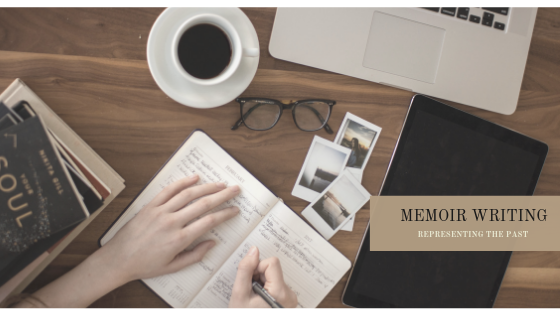
Using representational details in my memoir is imperative because I am reconstructing the scenes going back as far as over a hundred years. It is a huge challenge for me to transport the reader to an era which would be beyond the comprehension of many, especially those of a foreign origin. Most of the reference material that I have is in the form of pictures, scriptures, letters, legal evidence, relics, buildings, gazetteers, references in books, archeological museums, newspaper write-ups, online references, interviews, and a lot of published work. Memories and experiences of people associated with my subject and my own personal experiences may lack the details needed to weave a coherent story, and that’s where the representational details for the mental images would fill in for comprehensibility.
Besides, I am writing about ‘history’, attempting to transform a non-fiction book into a memoir. I need to work on the connectors, give structure to the scattered pieces of information, and bind with sensory details to represent my visions. Writing this memoir is more of a ‘fill in the blanks’ exercise, for me with consequential deviations from the truth and a near accurate depiction of ‘what it plausibly might have been’. The representational details give me the tools to re-create the story that lived, died and part of which survived.
Since this is Memoir writing and not a cold collection of academically delivered historical facts, I largely rely on my memories, emotions, and experiences. There are incidences that have their significance so back in time, however, I exploit my reactions and elicitations to those references when they became a part of my mental experiences.
Luckily I have available to me a composite collection of verifiable and validated information in the form of credible resources such as the legal Documentation; Gazetteers; History at the National Archaeological Survey Department; Punjab State Archives; Online References; Books on my family; Researchers’ opinions in the form of their independent work; Course Books on History of Chiefs of Punjab including my family; a thicket of photographs from pre-Independence; Letters from British Estate Managers; Letters by Non-Resident Indians who are research scholars; Articles and Newspaper Publications; and Interviews with family members.
Online references, however, do not seem to be a very credible source of information to me for two reasons- one, most of the information is replicated from what’s been written at one point in time; two, there is no authenticity of the information available online as there are no references or citations to support the source of such information. So much so, even some of the books written by authors within the family stink of bias and self-aggrandization, in addition to also being materially incorrect [with the basic facts in contradiction with the officially recorded evidence]. Somehow, ‘googling’ puts before the inquisitive inquirer thousands of search results within a fraction of a second, however, for a serious job such as Memoir writing, how much of that information is credible, is a question that looms large before me.
So, what really works best for me is to stay within the safe lines of genuine resources of information and work through the gaps by referring to my memories and memories of those closely connected with those events.
